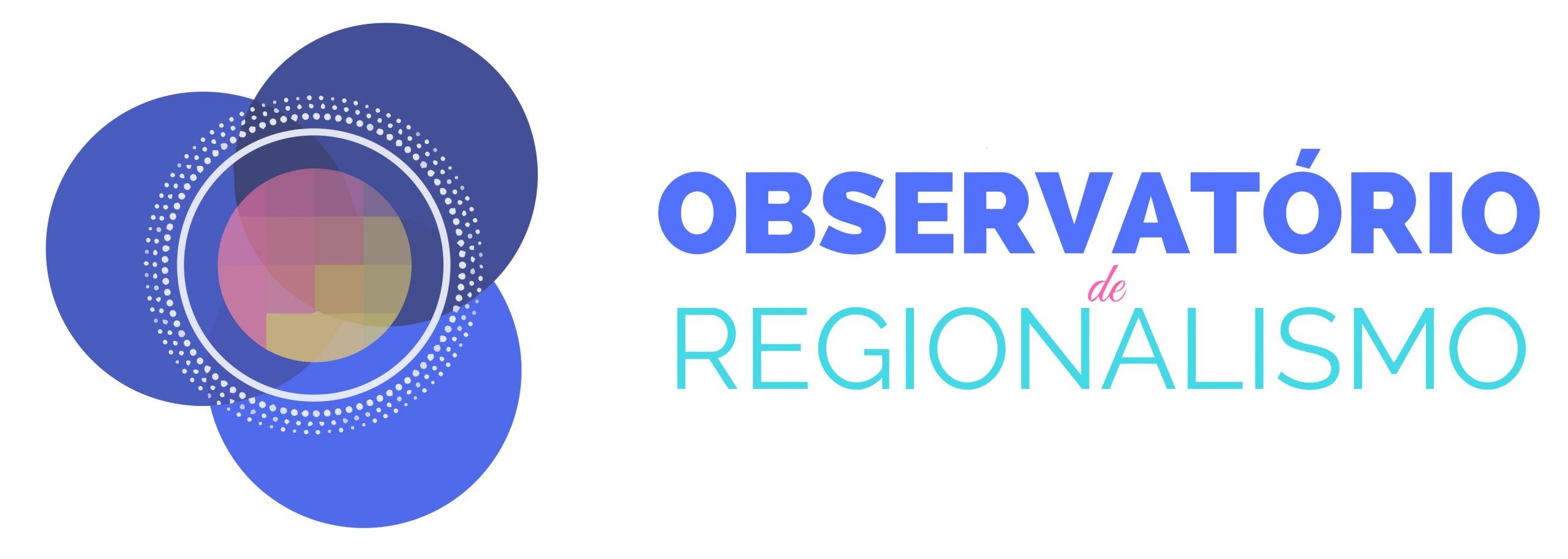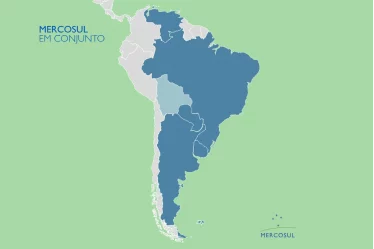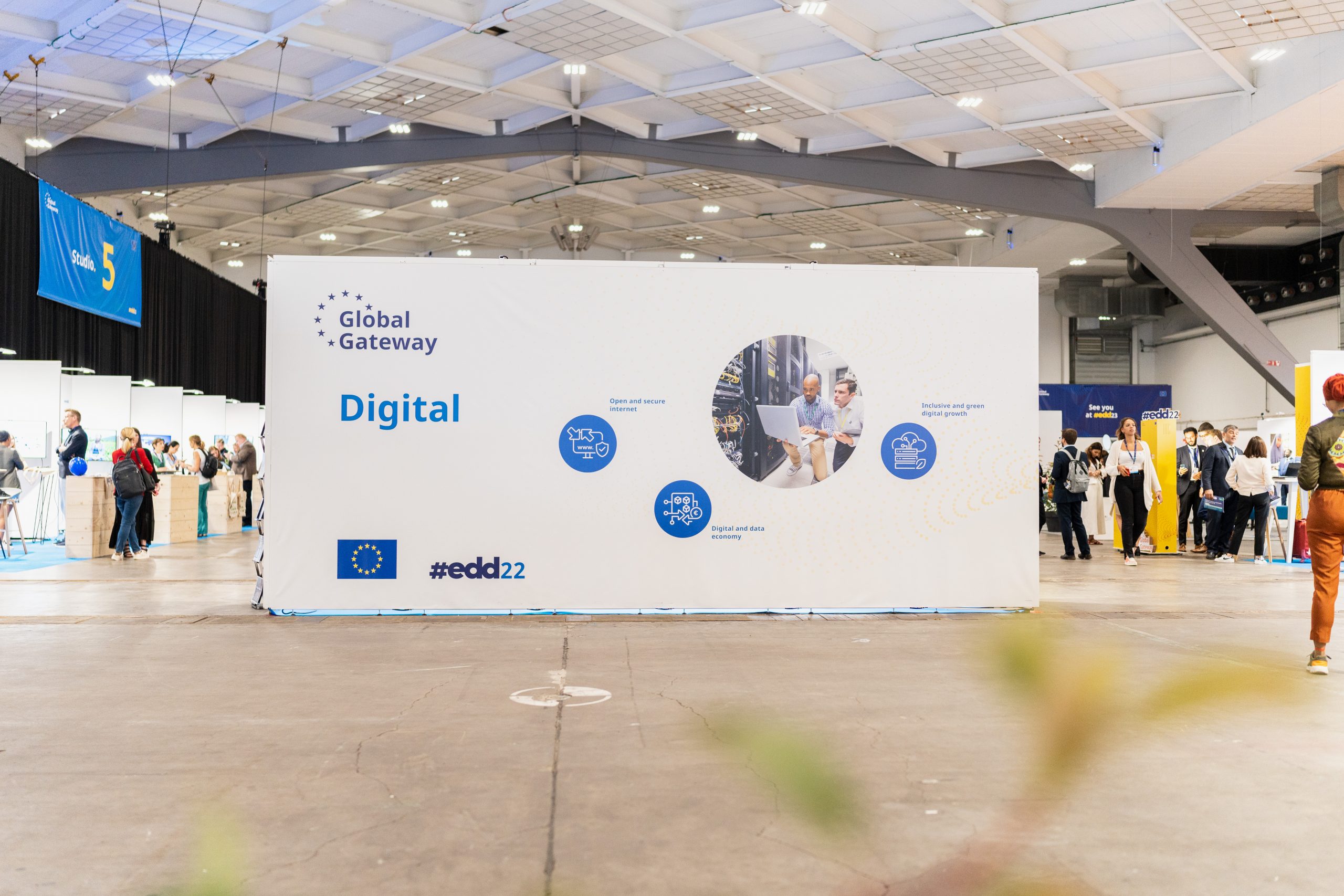
Image from EDD 2022.
During June 21st and 22nd of 2022, the European Commission organized the 16th European Development Days (EDD), a conference for fostering discussion, networking and cooperation on different themes, with a broad participation of young leaders, presidents, prime ministers, ministers, governmental representatives, the private sector, multilateral institutions, banks and much more. This year’s theme was the ‘Global Gateway’.
Launched on December 1st, 2021, the ‘Global Gateway’ has been entitled to be the European Union’s (EU) contribution to narrowing the global investment gap worldwide. Aligned with the United Nations 2030 Sustainable Goals, and the commitments of the G7 leaders from June 2021 in this issue, the EU declared investments up to EUR 300 billion until 2027 to five (5) key areas: 1. digital sector; 2. climate and energy; 3. transport; 4. health; 5. education and research.
Through ‘Global Gateway’, the EU expects to strengthen connections between Europe and the world by: 1. supporting and financing better digital connections; 2. investing in clean energy for mitigation and climate resilience; 3. promoting infrastructure development that is sustainable, smart and not focused exclusively on roads; 4. overcoming supply chain bottlenecks, specially in the pharmaceutical aspect, by investing in the development of local manufacturing capacities; and 5. investing in quality education, digitalization and inclusion, specially of girls, women and vulnerable groups around the globe.
But how will ‘Global Gateway’ foster all of these connections? According to the EU, the ‘Global Gateway’ is financially supported by the European Investment Bank (EIB) and the European Bank for Reconstruction and Development (EBRD). However, the strategy also accounts with the participation of national banks from the EU Member States. Besides, during the EDD the European Commissioner International Partnerships, Jutta Urpilainen, stated multiple times that the EU also seeks to mobilise the private sector, not only from the EU side, but from their partners side to leverage the impact of such infrastructure investments.
It is interesting to highlight that the ‘Global Gateway’ also counts with the support of new financial tools of the EU, specifically: the Neighbourhood, Development and International Cooperation Instrument (NDICI)-Global Europe; the Instrument for Pre-Accession Assistance (IPA) III; the Connecting Europe Facility; the Interreg; InvestEU; the Horizon Europe; the European Fund for Sustainable Development+ (EFSD+); and the financial arm of NDICI-Global Europe, which will make available up to EUR 135 billion for guaranteed investments for infrastructure projects between 2021 and 2027.
The EU has long been an important player in the international arena, however, since the global economic crisis of 2008, its role as an international lender and financial supporter has suffered a deep drop down. As it can be seen in the World Bank Database, from 2007 to 2009, the Foreign Direct Investments (FDI) of the European Union in the world dropped from 11,1% of its GDP invested abroad, to 3,9%, respectively. Besides, since 2016 the world saw another drop down of the EU’s investments abroad, reaching in 2018 one of its lowest investments since the 1970s, 0,8% (Image 1).
Image 1 – Foreign direct investment, net outflows (% of GDP) – European Union
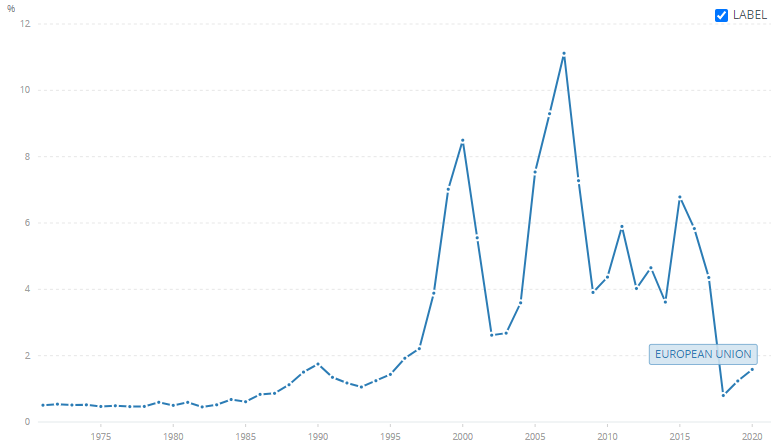
Source: World Bank.
Thus, the ‘Global Gateway’ strategy comes at an important time, not only to bring the EU back to its’ track as an international player, but as a leader on boosting investments globally towards the commitments of the UN 2030 agenda. As different studies point out, the EU, the World Bank and the Interamerican Development Bank (IDB) investments abroad have, in comparison with Chinese investments, for example, a higher quality impact for the development, because they are directed to a range of governmental, social, and environmental purposes (Gallagher 2016). However, they also present more conditionalities for the developing countries, being more difficult to access such lendings for those smaller and more unstable countries, which are also the most in need.
Led by the EU, the ‘Global Gateway’ presents an opportunity for directing investments and lendings to build infrastructure (transport, digital, energy, health and education), and overcome in the next years the huge existing gap and difficulties for many underdeveloped and developing countries in accessing such needed resources.
However, it is important to understand how such resources can be received, since the Western banks have requirements to be fulfilled and granted for the financing to be approved. In this sense, the EU announced that there will be provided within the ‘Global Gateway’ technical assistance to partners to enhance their capacity in preparing credible infrastructure projects. During the EDD one of the main discussed points about the access to the ‘Global Gateway’ resources was the needed commitment on the partners counterpart in improving accountability. Such a scenario can be achieved, as pointed out by the EU Commissioner Jutta Urpilainen, by granting transparency, longevity and contingency, focusing on strengthening the institutional capabilities of the States.
Being able to participate in the EDD 2022, I would like to highlight some insights of the many panels that were held about the ‘Global Gateway’ strategy. First of all, there were 9 panels discussing different potential contributions of the ‘Global Gateway’, being 5 of them to discuss the strategy in different regions of the globe: Central Asia, Africa, Indo-Pacific region, the neighboring Europe, and Latin America and the Caribbean.
During the Opening Ceremony, Ursula von der Leyen, President of the European Commission highlighted the importance of addressing the global infrastructure investment deficit, especially post-Covid. The ‘Global Gateway’ was, then, addressed as “a better choice” for infrastructure investments, having 3 main goals: resilience, sustainability and cooperation. In the same ceremony, the President of the European Council, Charles Michel, said that such strategy aims in propelling Europe as a source for global development.
From other points of view, during the opening, there were also some critical thinking and demands towards the EU. The King of Lesotho – Letsie III, highlighted the inequalities between the North and South, in which cooperation is essential to overcome the inequalities, poverty and many other problems that affect the world, specially the Global South. The President of Ghana, Nana Akufo-Addo, brought in his discourse the problem of poverty increase and the limited access to credits and lending for African countries, being important to step forward on the EU-Africa bilateral cooperation. Besides, and during the 2 days of event, the climate change and environmental impact was one of the main themes when discussing the need for green energy and sustainable infrastructure. In this sense, for example, the President of Cabo Verde, José Maria Neves, brought attention to the increasing droughts, as well as a growth of desertification in the country.
During the Panel: ‘The Geopolitics of the Global Gateway”, many important questions were highlighted by the speakers. Kandeh K. Yumkella, a Sierra Leonean Agricultural economist, politician, and former United Nations Under Secretary-General, questioned: “How will the Gateway be different or complement the Chinese ‘Belt and Road Initiative (BRI)’, or the American ‘Build Back Better World (B3W)’? Bringing the perspective of many African countries, Yumkella highlighted that the partnership with Europe must help and consider the needs of Africa, in the long and short term. Pointing out that the continent is rich in the needed raw materials and minerals. Thus, they don’t want ‘Global Gateway’ to foster a partnership focusing on their raw materials, but to boost a win-win relationship aiming in development, industrialization and building regional value chains. Besides, and in this sense, the economist also pointed out that China is not seen as a threat in Africa, but an opportunity, and that every partnership is an opportunity for their ambition of industrialization.
Image 2 – Panel: ‘The Geopolitics of the Global Gateway”
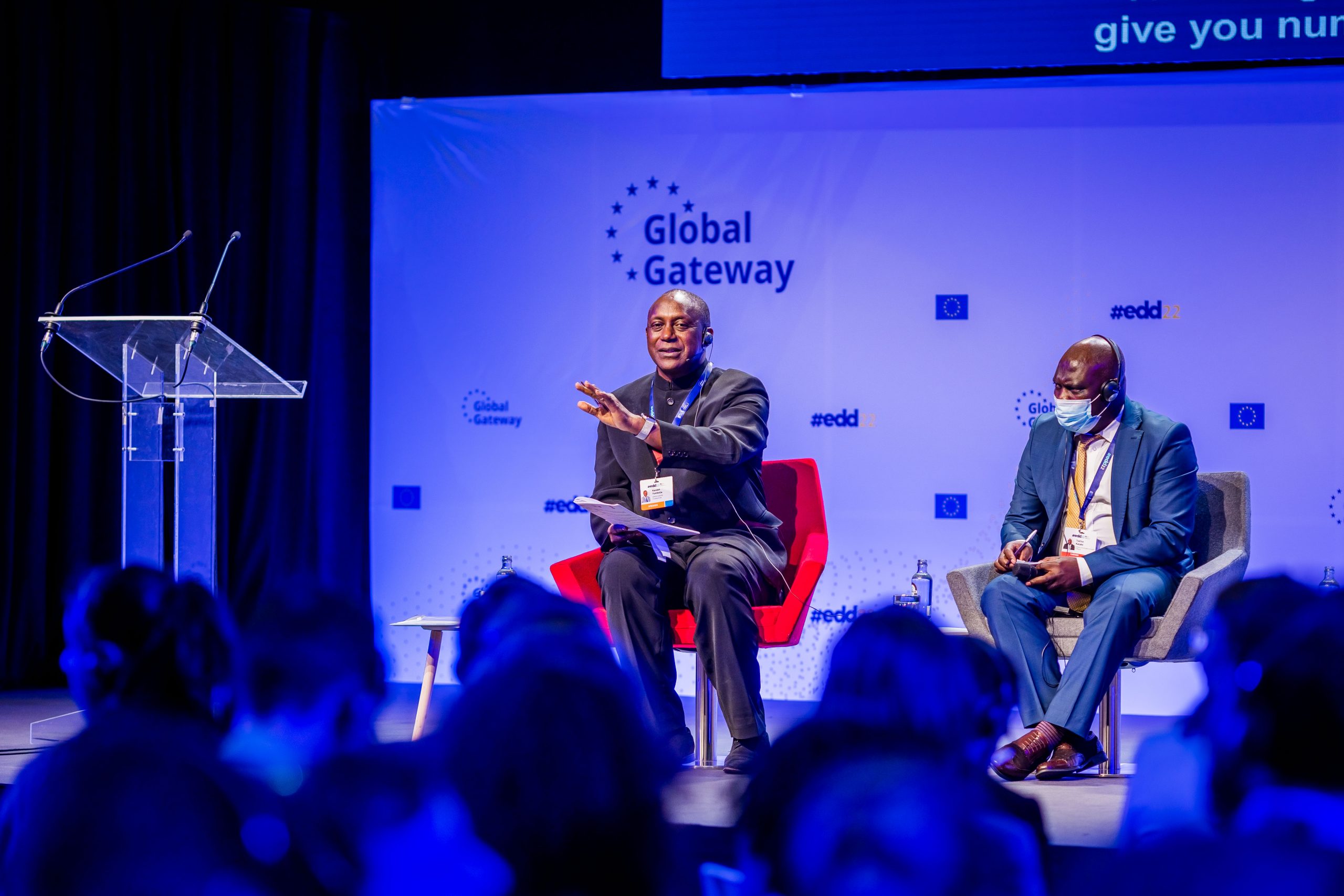
Source: EDD 2022.
During the Panel ‘Global Gateway in the Indo-Pacific’, many were the question of the governmental representatives about how the EU intends to deal with the diversity and asymmetry of the countries in the regions, which results in different needs. How would the EU address such needs? Former President of Timor Leste, Kay Rala Xanana Gusmão, discussed the disappointment of poorer countries of the Indo-Pacific with the low and little infrastructure development, being worried that the ‘Global Gateway’ would be too big of an initiative to achieve something concrete.
Answering the questions raised during the Indo-Pacific Panel, Jean-Louis Ville, Acting Director at the European Commission for International Partnerships with Middle East, Asia and Pacific (INTPA.C), pointed that there is no such thing as ‘one size fits all’ approach, saying that hearing the needs and expectations of each country was one of the goals of the EDD. In this sense, Jean-Louis Ville affirmed that an agenda of projects will be set jointly, considering such different needs, keeping in mind that it is important to maintain a balance of efforts and fight inequality in the region.
Image 3 – Panel: “Global Gateway in the Indo-Pacific”
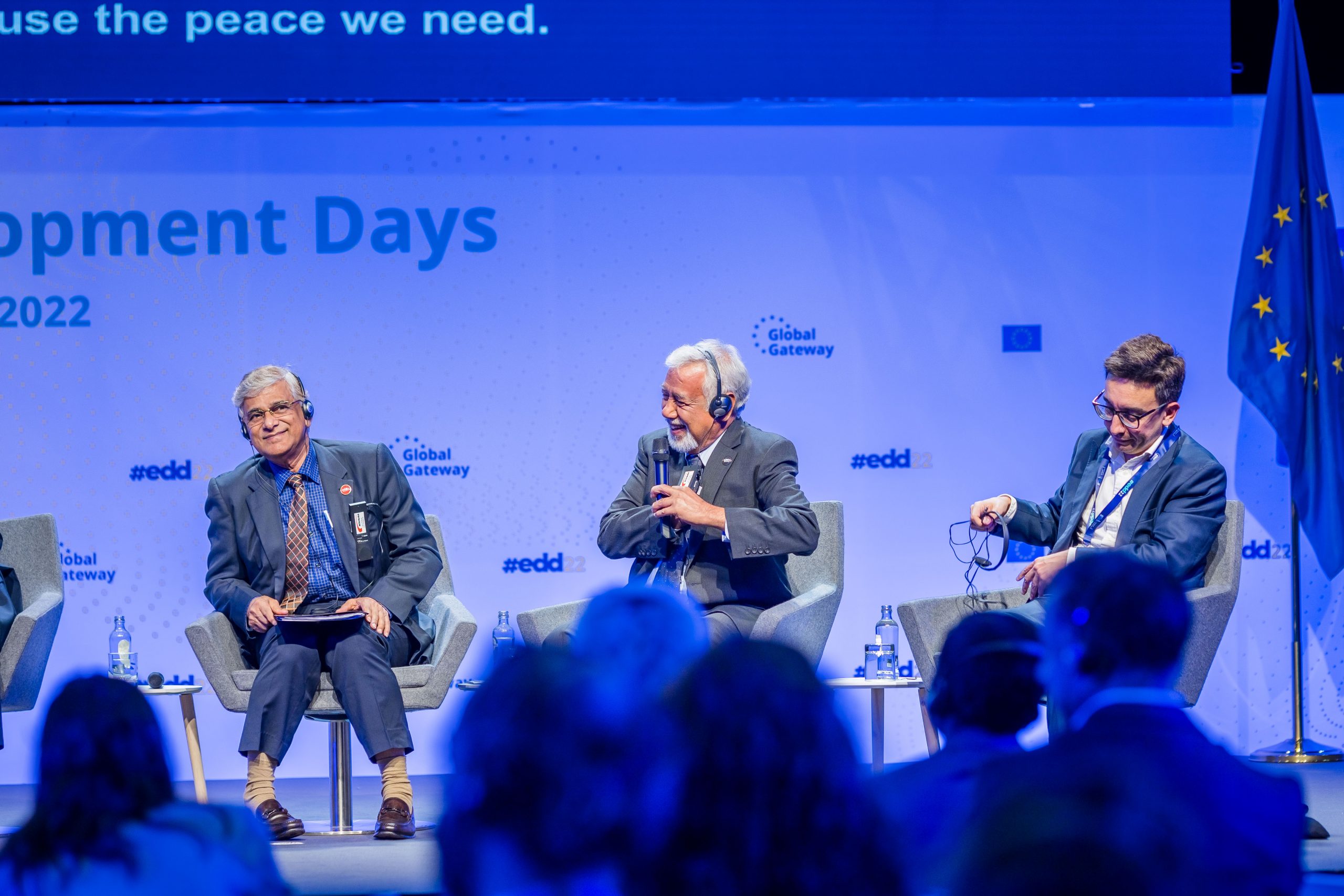
Source: EDD 2022.
Finally, the Panel “Global Gateway in Latin America and the Caribbean (LAC)” addressed a specific topic on infrastructure, the digital infrastructure. The Commissioner Jutta Urpilainen mentioned that on June 15th she was present at the launch of the Ecuador stretch of the digital data highway between Europe and Latin America within the BELLA (Building Europe Link to Latin America) consortium. The underwater fiber optic cable connects Europe and Latin America aiming to provide reliable high capacity connectivity to boost business, scientific and cultural exchanges between the two continents. Currently, BELLA already connects Portugal to Brazil, Argentina, Chile, Peru, Ecuador and Colombia.
Image 4 – BELLA Project
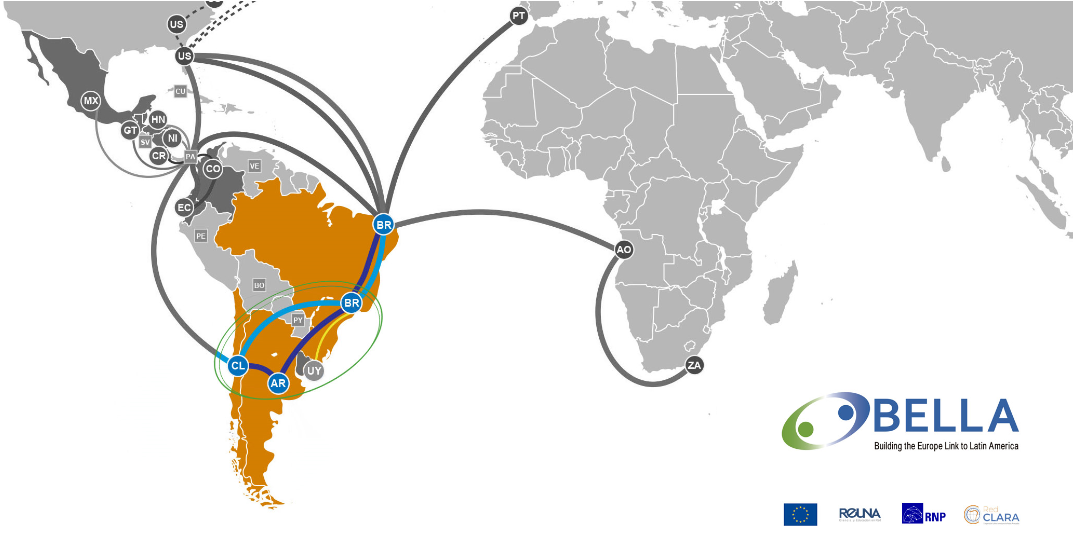
Source: BELLA.
After discussing digital connections and digital transformation in LAC, I had the opportunity to ask the speakers of the panel about the expectations of the LAC representatives towards the ‘Global Gateway’, as well as the actions of the EU for directing investments in infrastructure that could impact the concrete needs of the region.
Image 5 – Participation on the Panel “Global Gateway in Latin America and the Caribbean”
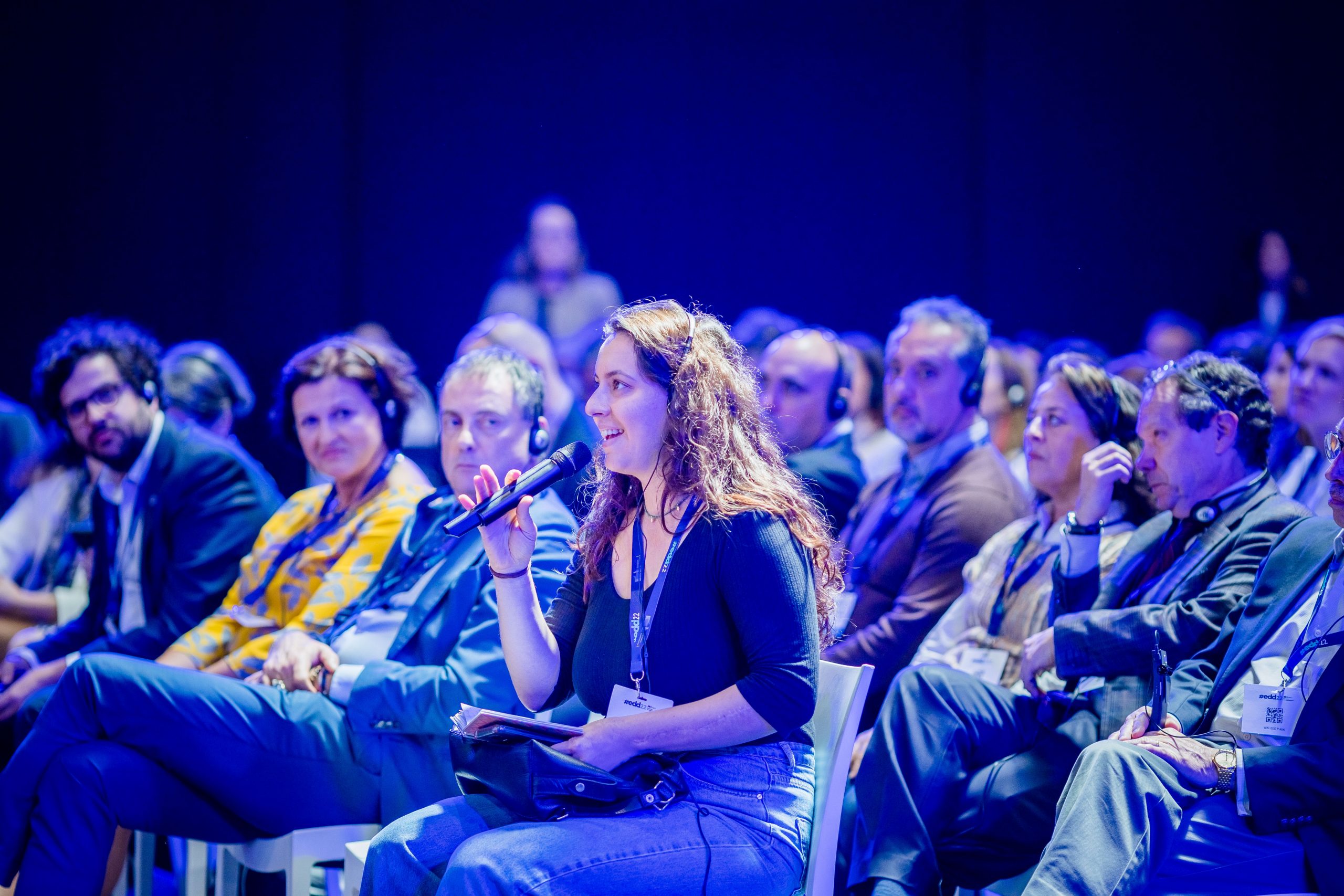
Source: EDD 2022.
Addressing the vision of the LAC, Mario Cimoli, Acting Executive Secretary of the Economic Commission for Latin America and the Caribbean (ECLAC), highlighted the need for thinking about the heterogeneities between LAC and the EU. Within LAC it is important to direct efforts on regulamentation and standardization, in which, the regional integration in LAC has an important role. Besides, Cimoli pointed out that the EU as a partner of the region must go beyond the ‘Global Gateway’ strategy, pairing it with a policy for investments that can generate jobs and impact in the LAC’s development and fight against inequality, specially on the access of internet in the Latin American households.
On the part of the EU, the Commissioner Jutta Urpilainen pointed out key challenges for a broader positive and effective impact of the ‘Global Gateway’ in LAC development: corruption and weak institutions. Facing these challenges, the Commissioner said that it is important to strengthen governance to generate more attractivity for the investments of the EU, specially those coming from the private sector. Predictability and transparency in this point was highlighted as crucial, in which the LAC must play their part in the ownership of its accountability, which is also key for the maintenance of democracy in the region.
Image 6 – Panel “Global Gateway in Latin America and the Caribbean”
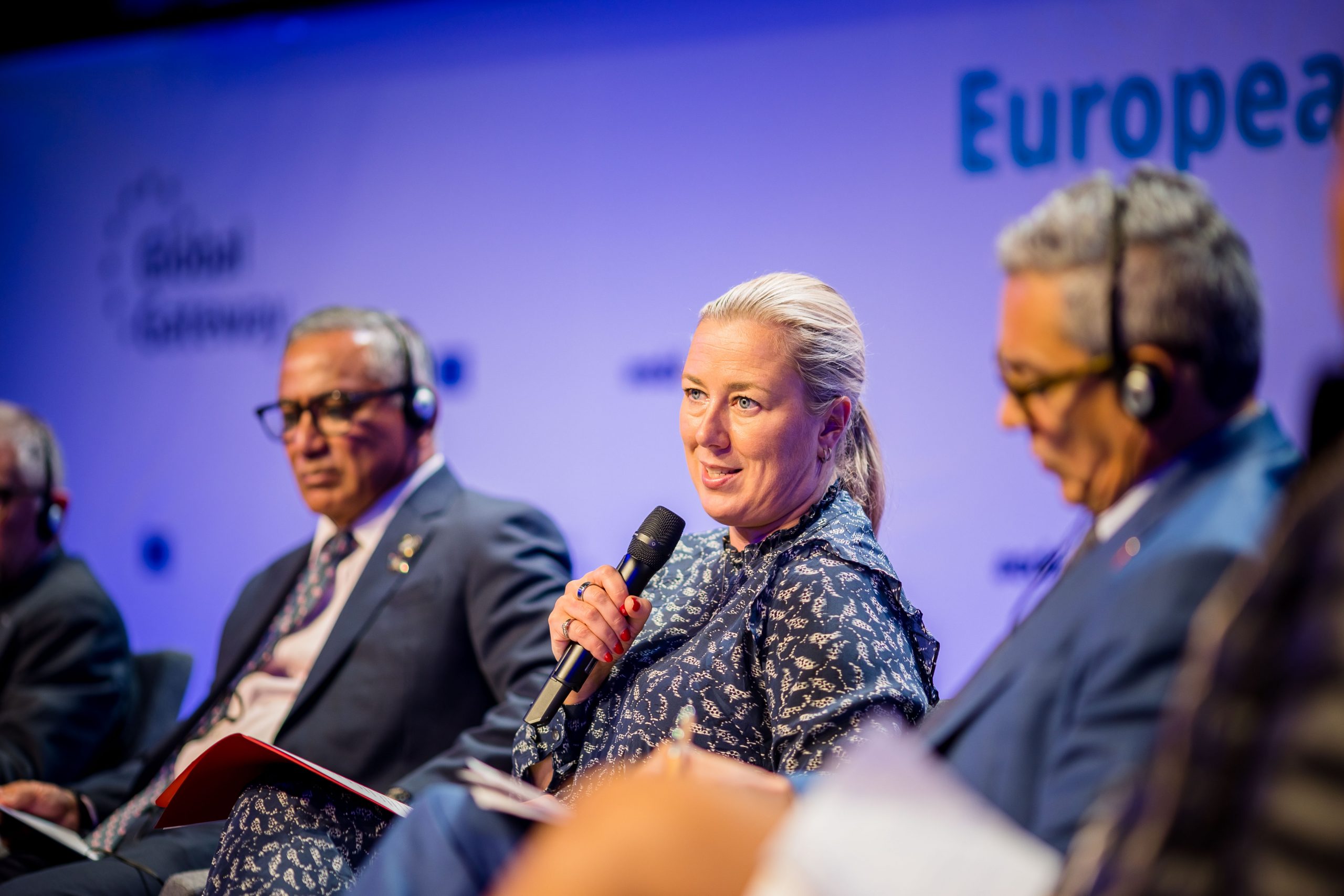
Source: EDD 2022.
It is also important to highlight that during the LAC panel addressing the ‘Global Gateway’, there were representatives only from Belize and Costa Rica, which presented their own individual visions for the strategy and their approximation with the EU. It was possible to visualize the difference of positioning and unity when comparing the LAC debates with the other panels. While African countries were presenting common demands to the EU, talking about their aims for industrialization, and building regional value chains through the African Union, LAC showcased their current regional fragmentation, not having a joint vision of how the EU strategy could benefit the region as an unity.
In addition, the environmental problems faced by the region were not mentioned during the discussion about digitalization. During another panel about LAC, which the theme was “Green Pathways in LAC”, it was discussed about the energy transition in the region. In this panel, the ECLAC representative, Mario Cimoli, highlighted the difficulty of the transition in the region, which already has renewable energies of high quality in their territory, but are suppressed by the international demand for oil, making the transition disadvantageous. At no time the indigenous problems were addressed. As discussed in the Regionalism Observatory before, the EU-MERCOSUR agreement, for example, ignores the demands of the Latin American indigenous populations, expanding the areas for the agriculture exploration that invades and increases the exploitation of indigenous territories. Such a problem must be considered when thinking about the relations of the EU and LAC.
During the EDD it was possible to see the priorities of the EU and its partnerships, in which the African continent occupies the first place of priority, Asia in second, and, lastly, Latin America and the Caribbean. What has to be analyzed are the aims of the EU in boosting a global strategy for financing development and infrastructure, not only economic ones, in which European enterprises and constructors would gain access to different markets, but geopolitical ones. As stated before, the EU has had a drop down in its positioning within the international structure, having on the ‘Global Gateway’ an opportunity for changing its relevance globally, as a global investor. However, it is still not clear how they will differ from the Chinese and North-American initiatives.
The EU claims that their aim is to do their part, as a global player, in helping countries to surpass their investment gaps and achieving, jointly, the goals of the 2030 sustainable agenda. However, there were many mentions about the Chinese presence worldwide, and the opportunity brought by the EU in presenting “a better option” for investments and development.
Will the ‘Global Gateway’ deliver sustainable and high-quality projects, taking into account the needs of partner countries and ensuring lasting benefits for local communities, as they say? We will have to keep accompanying the development of this strategy and the partnership between the EU and the different regions of the globe. However, achieving a win-win relationship will depend more on the regional capacity on cooperating and defending its needs and priorities together, in the detriment of negotiating bilaterally, in which national and individual priorities take place. Regionalism and cooperation can have a crucial role in these transatlantic partnerships.
Reference
